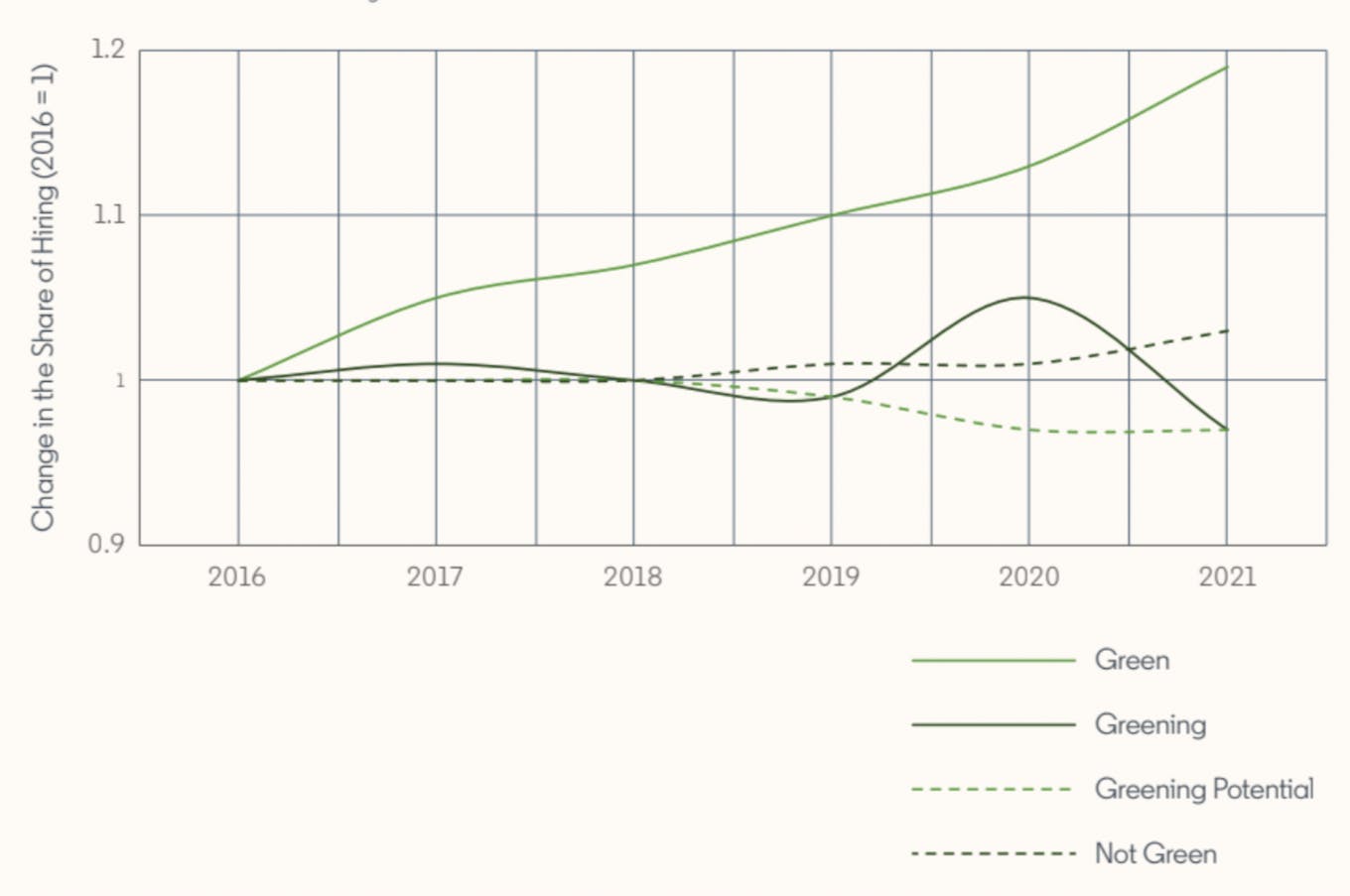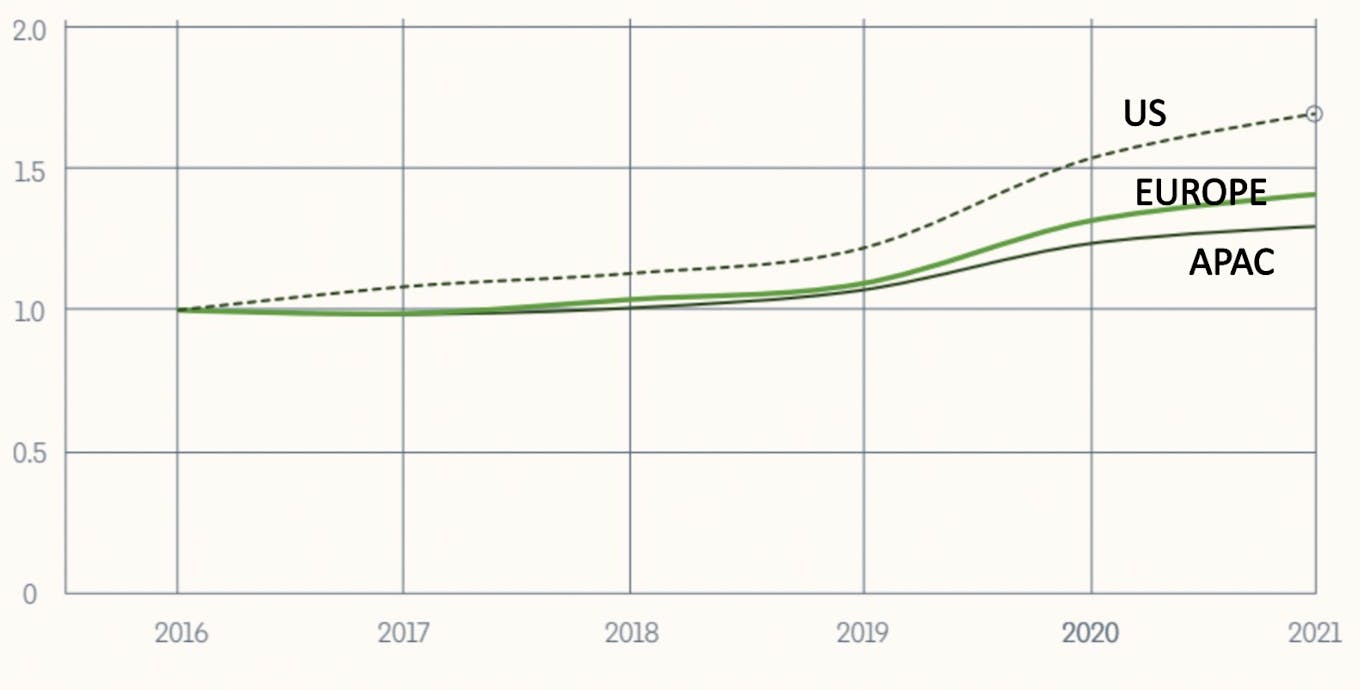Demand for the skills and talent to do sustainability-related work has grown rapidly in Asia Pacific, but the region is lagging Europe and the United States in how quickly employers are adding green jobs to the workforce.
To continue reading, subscribe to Eco‑Business.
There's something for everyone. We offer a range of subscription plans.
- Access our stories and receive our Insights Weekly newsletter with the free EB Member plan.
- Unlock unlimited access to our content and archive with EB Circle.
- Publish your content with EB Premium.
Asia Pacific has seen 30 per cent growth in hiring for green jobs — defined as jobs that cannot be done without sustainability skills — between 2016 and 2021, according to a global study of job searches on business social network LinkedIn, which has 800 million members in 200 countries.
The US has experienced 70 per cent growth in green jobs, and Europe 41 per cent, over the same five-year period.
Green jobs growth is faster in the region’s high-income countries, Australia, Singapore, and New Zealand. It is slower in China. In India, the share of green hiring has fallen over the past five years.
Asia Pacific’s share of ‘greening jobs’ — those that can be performed without environmental sustainability knowhow, but typically require some green skills — has generally declined over the past five years, with the Covid-19 pandemic slowing recruitment for these roles, LinkedIn’s study found.
The APAC decline follows a global trend that points to the infancy of the transition to a sustainable economy. Green and greening jobs account for 10 per cent of hiring globally, and while job postings that require green skills grew at 8 per cent annually over the past five years, the share of green talent — people with the right skills to do a sustainability job — has grown by about 6 per cent a year, LinkedIn’s data shows.

How the share of global hiring by job type has changed between 2016 and 2021. Source: LinkedIn
The “hard truth” is that there is a global shortage in the talent, skills and jobs to deliver the transition to a green economy, LinkedIn’s report said. “Based on the current trajectory of green skills growth in the labour market, we are not going to have sufficient human capital to meet our climate targets,” it said.
The world must reduce emissions to net-zero by 2050, if it is to avoid the worst consequences of climate change. This will require investment in current and new clean technologies, and the reskilling and upskilling of the workforce around green business models.
According to World Economic Forum’s Future of Jobs Report, the gap in the skills needed to do green jobs will continue to be high through to 2025, as in-demand skills across jobs change. Companies in the report say that around 40 per cent of workers will need reskilling for up to six months to do perform sustainability-focused jobs well.
The total number of workers transitioning into both green and greening jobs are still low, said LinkedIn’s report. “Not all jobs will need to be exclusively green — it is not just those building solar panels — it is the sustainable fashion manufacturer, the fleet manager, the sales manager. There is a marked lack of green skills and jobs, and this is slowing the rate at which we can green the economy.”
LinkedIn’s study found that sustainability managers were most in demand in Asia Pacific. Singapore saw the highest growth in demand (41 per cent) for talent to fill such roles, followed by China (33 per cent), New Zealand (29 per cent), Australia (24 per cent) and India (16 per cent).
The fastest-growing green skills are in ecosystem management, environmental policy and pollution prevention.

Which green and greening jobs are most popular? Bubble size indicates share of countries in the sample where the job was among the fastest-growing in 2016–2021. Bubble shade indicates type of job. Dark: green job; light: greening job.
Green jobs gender gap
The LinkedIn study also shows a gender gap in the sustainability field. According to its data, there are only 62 women for every 100 men considered sustainability talent, a proportion that has remained unchanged since 2015.
Every country in the study has grown its share of women in sustainability roles since 2015 — up from 6 per cent in 2016 to 9 per cent in 2021. However, the share of male green talent has grown at a similar pace — from 10 per cent to 14 per cent.
Men are moving into green jobs faster than women. Over the past five years, 66 per cent of career moves into green jobs have been male, and 63 per cent of transitions into greening jobs were made by men.
LinkedIn said the green job transition should offer an opportunity for the world to ensure an equitable and resilient future for workers, but current trends are not going in the right direction. “Governments and companies must seize this opportunity to ensure a more diverse and inclusive future for all workers,” said the report.















